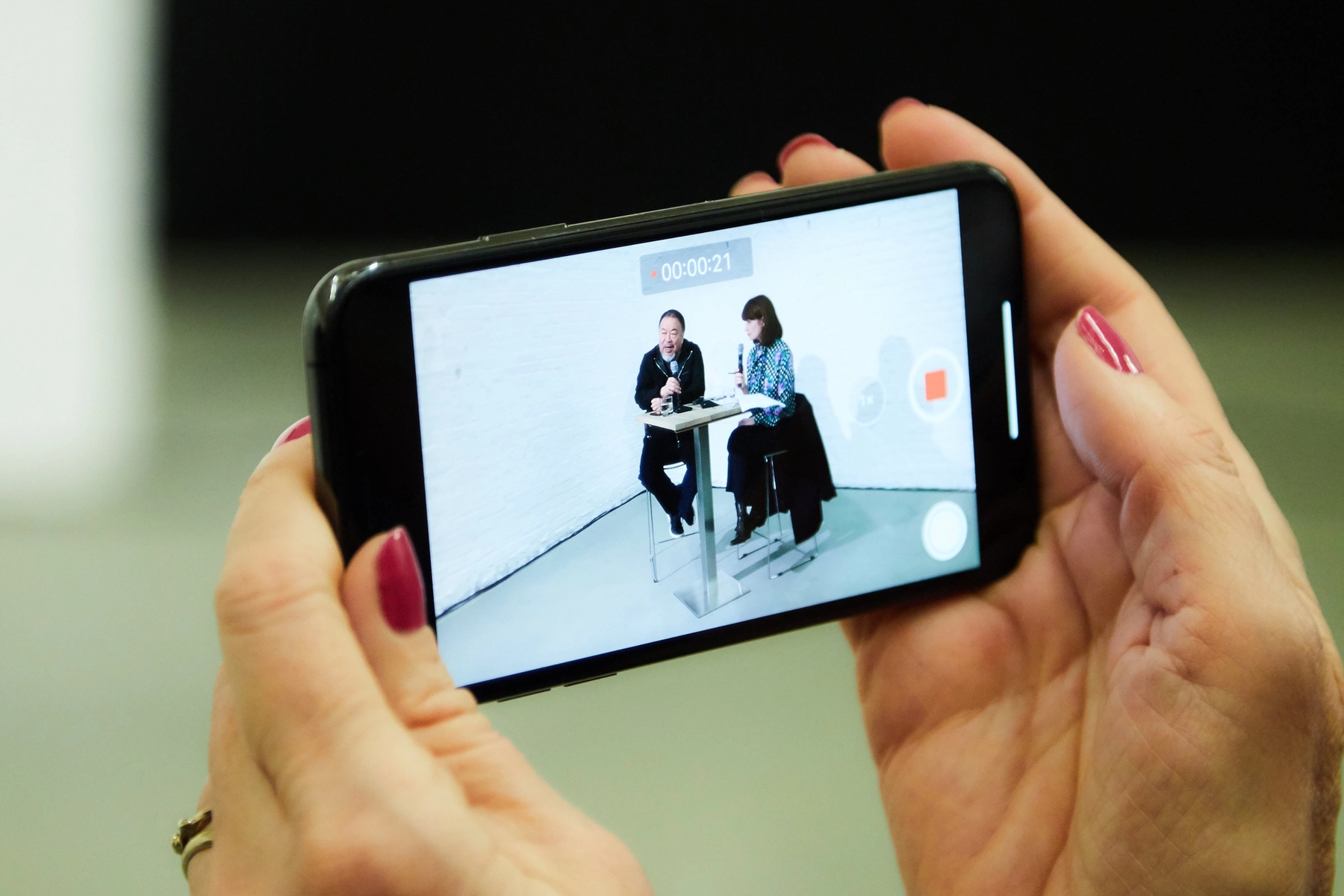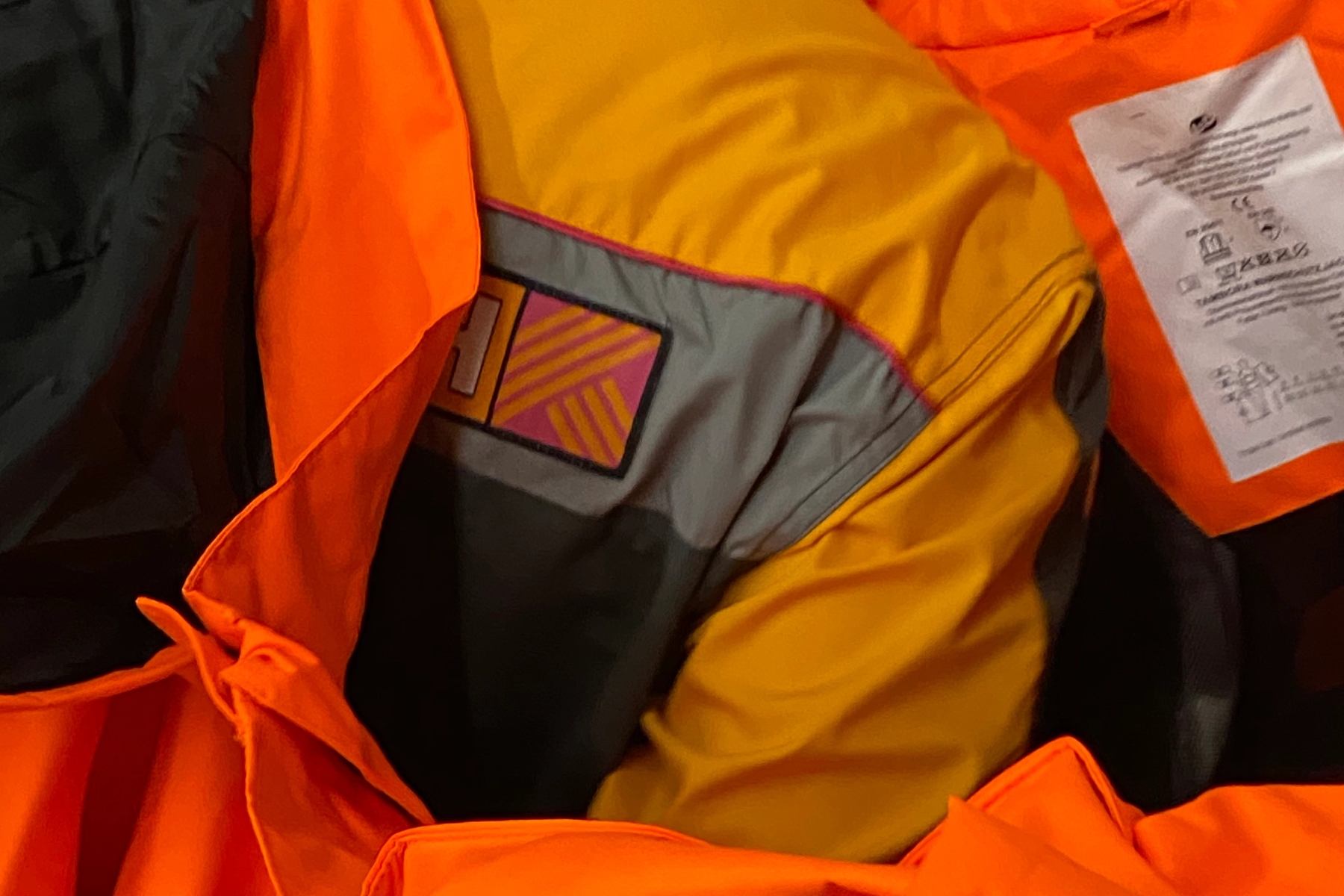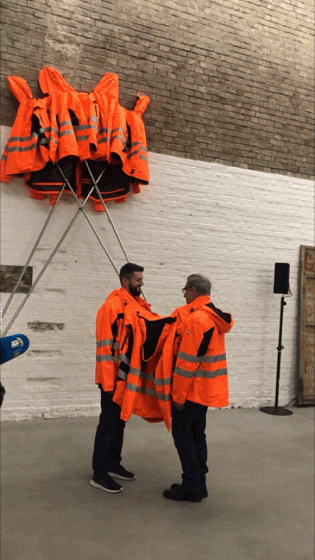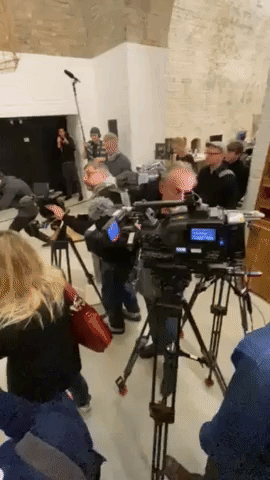Ai Weiwei x Hornbach: Safety Jackets Zipped the Other Way
“I made this work for the public, not necessarily for art collectors or museumgoers.”
Ai Weiwei

Ai Weiwei's new collaboration with German DIY-brand Hornbach is at attempt to allow everyone to create an original Ai Weiwei in the privacy of their own home. The work consists of a set of high visibility safety jackets zipped together to form a connected, nonfunctional soft sculpture at an afordable price point. The connected jackets can then be installed either standing or hanging. An instruction booklet is available for download or purchase at Hornbach.de.
This collaboration was initiated by Neutral Zürich. We chatted to the founders Michelle Nicol and Rudolf Schürmann about constructive disruption, the need of art to reach wider audiences and also how mutual trust led to the creation of 'Safety Jackets Zipped the Other Way'. The campaign was brought to life by Neutral Zürich together with Heimat, Berlin. Read on below.
Words Marianna Serwa
Photography Joseph Kadow


How did the collaboration between Ai Weiwei x Hornbach come about and what was the role of Neutral in the process?
The initiative came from Neutral: We contacted Hornbach with the idea of offering radical, museum-sized art for everyone to build themselves - especially for people you don't meet at gallery openings. Ai Weiwei: “Art exists only because of art, it has no other claim. My works have been shown in countless museums, but now I want to reach a different audience. And that is the case with Hornbach. At the same time, I am directing an opera in Rome.” Hornbach said yes, Ai Weiwei said yes and we worked together with Hornbach's agency Heimat Berlin, to create the campaign. Constructive disruption has been the proven tool of our agency since 20 years. With strategies like “Art for all” we regularly convince our clients to do things that really matter to the people out there: To make life better. Better means: more just, more beautiful, more sustainable, freer.






Would you say this is a «sponsored» artwork or is it different? To what extend is it a collaboration?
"Sponsored" is the wrong track. It is a close collaboration with Ai Weiwei and his studio - combined with strict project management and a sophisticated launch and communication strategy. The basis was AWW's trust in Neutral and Hornbach: Ai Weiwei was immediately convinced by our idea. AWW invested as much time and care as he does for his own projects. In the process, various prototypes were created. Together with Hornbach, "Safety Jackets Zipped the Other Way” was selected for the general public.


How is the promotion of this piece different from, say, a traditional museum piece?
The anchor point of the promotion is the huge interest of the public media and trade media. In fact, no action by a European retailer in the last 10 years has had such a huge media response. A classic campaign in all media followed.
Can the collaboration be seen as an advertisement for Hornbach? Is that bad?
The initiative opens Hornbach up to a new target group - one that is younger and more diverse. So, yes, it is a considerable promotion for the do-it-yourself company. We need more and stronger involvements of architecture, art, urban planning, and design into life – e.g. via mass marketing.


How does Hornbach understand the result? how is that meaningful for such a company?
It is a great success for Hornbach, and they have loved not only the result but also the process.
Do you think that in the collaborations between artists and brands there is a danger for artworks to become just another marketing accessory?
Since early modernity, it has been a postulate of artists to reach the large population. To overcome art and transfer their creative genius into daily life (Russian Constructivists); the Situationist International founded 1958 - the experimental group of artists with its aspiration of realizing the promises of avant-garde art in everyday life. And, more recently, Hans Ulrich Obrist's series "do it" with instructions on how to re-enact artistic ideas and works.

The sensation is that AWWs museum piece is strong enough to define a temporary autonomous zone in society beyond the world of art. It is marketing for activist art thanks to the quality of the artwork which is deeply rooted in AWWs art practice, if you look at his work 'Five Raincoats Holding Up a Star' from 1986 for example.
And, of course, it is an invitation to all Hornbach customers to raise their level of inspiration and engagement a few notches.


What is the relationship of Neutral to celebrities? Are today’s artists celebrities, or are they different?
Our co-creators have been architects, artists, scientists - well-known names as well as emerging talents. The result: Content and visual worlds are more challenging, but also more deeply rooted.



What are the most relevant connections to facilitate today, according to Neutral?
It is our belief that architecture, art, design and fashion need to take much greater influence on economic, social and political decisions. Moreover, public-sector architecture and urban planning must overpower the technocrats.
Do you have a personal feeling or definition of what « high culture » is?
Not pretentious. Ahead of the Zeitgeist.
How do you define creative genius?
Is it art or does it just look like art? Is it architecture or does it just look like architecture? Is it an idea or does it just sound like an idea? We don’t know what we want, but we know it when we see it, as Louise Wilson used to say. In today's appropriation culture it is often a simple idea – or a very complicated one - , it is absolute precision and unpretentious self-similarity that defines the stuff to go for. The stuff that sometimes creates shared experience.



